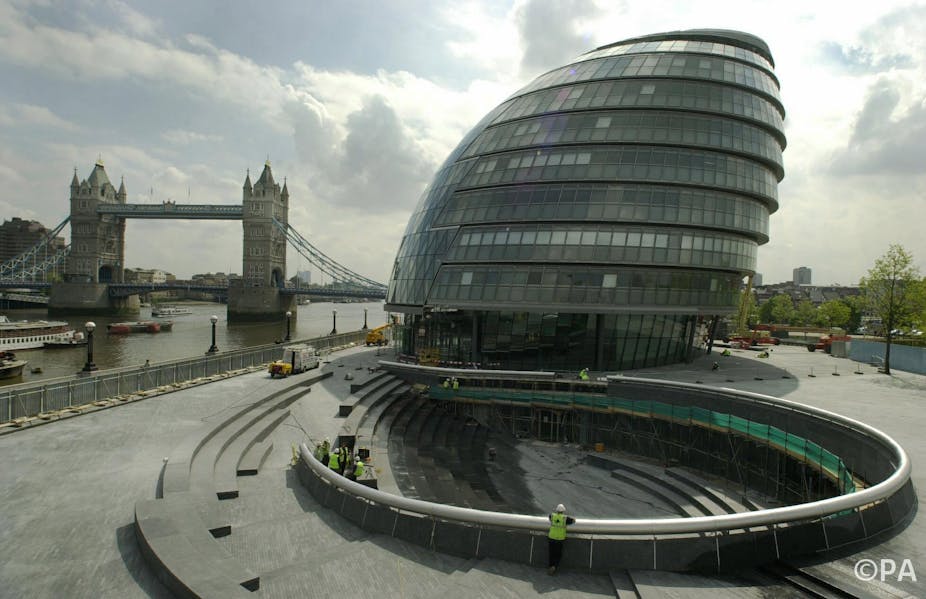When a public utility is acquired by a private equity firm, there is no doubt what kind of process is underway. The take-over of provision of services and, by extension, ability to profit from them is obvious. But a more covert process of creeping privatisation is taking place throughout many cities, in which public land and accountability are steadily moved into private hands.
The fact that the state has ceded some of its core functions and outsourced them to the private sector exacerbates the far-reaching consequences this privatisation process will have for the quality of civic and democratic life.
Privately governed residential enclaves known as common interest housing developments (CIDs), about one-fifth of them gated and walled, are the predominant form of new housing in the fastest growing cities and suburbs of the US. Over the past 30 years this massive privatisation of local government functions, consisting of over 230,000 housing developments containing almost one-sixth of the nation’s population, has changed the appearance and organisational structure of American towns and cities. About one third of all housing constructed in the US since 1970 has been through CIDs, and in many metropolitan areas they account for more than half the housing. According to the American Housing Survey, conducted by the US Census Bureau, the number of people living in gated communities rose to almost 11m households in 2009, up from slightly more than 7m in 2001.
The boom in private security provides a dramatic example of the overall trend towards privatisation. Private security officers patrolling US residential neighbourhoods and businesses have outnumbered police officers since the early 1970s. Sir Ian Blair, formerly London’s Metropolitan Police Commissioner, has described Miami as “the final nightmare for society”, where 19% of the city is not covered by the police and rely instead on private security instead. Interestingly, Miami has one of the highest rates of violent crime in the US, which shows that private security does not equate with safety.
The above developments can be viewed as part of a broader trend of transforming the public realm that is reflected in the vocabulary used by developers. One popular item is the “captured” street: a public street is closed, and the land given to a private developer in order to assemble small lots into larger areas. As these streets are subject to restrictions for hours of access and maintenance requirements, the public sphere is diminished, and the signal is sent that enclosed private space, rather than the public street, is the preferred place to be.
Corporations claim that spaces are “public” so long as anyone can enter. By this measure shopping centres are no different to town squares. Major building and developments in London appear filled with public space - Canary Wharf, or More London along the south bank by Tower Bridge, for example. But this is all private land, where public access is a privilege that can be revoked at any time. Town squares and other elements of the public realm have been displaced as centres of community life by shopping malls reachable only by private car, where people engage in private consumption within private space.
But shopping malls are no longer a suburban phenomenon, but occur in cities where another form of corporate ascendancy is manifested. To exclude undesirable elements and to highlight corporations’ key societal status, developers use elements such as buildings, streetscapes, land use, traffic and pedestrian circulation, and other means to control the physical environment. For instance, the public realm may be diminished by relegating the pedestrian-oriented ground floor of buildings to secondary status, using it instead for parking and other utilitarian purposes.
For example, visitors enter the new NikeTown in Boston, located on a very busy pedestrian street, by car or through a lobby from which they are swept by escalator upward, away from the public streets to the more exclusive environment above. In Philadelphia’s downtown most of the buildings have been linked together by footbridges at the second floor level, forming a continuous network giving access to shops, offices and parking. The network is air conditioned and patrolled by a private police. The street underneath, which used to be the place of public life, is now frequented only by the homeless.
City centres designed purely with shopping and leisure in mind produce places which are placeless, so to speak. Cut off from their original wellsprings of local life and vitality, they are characterised instead by a fake, theme-park atmosphere, a result of their disconnection from the local environment.
It is fair to say that, with perhaps the exception of the East Coast, the traditional forms of public spaces have almost completely disappeared from the American city. By definition a city is a melting pot of social strata, instead the contemporary American city is riven by internal divisions between zones that are socially, if not geographically, separate.
This kind of privatisation undermines the very foundations of civic and democratic life. Public spaces are the arenas of the collective, common life that is vital to a thriving society. They are places where citizens can exercise their civic freedoms. In public spaces we are all equal, which underlines their democratic nature. Private control and stratification are thus inimical to the very heart of democratic principle. Democracy cannot survive when civil rights are being subordinated to property rights, citizenship to consumerism.

